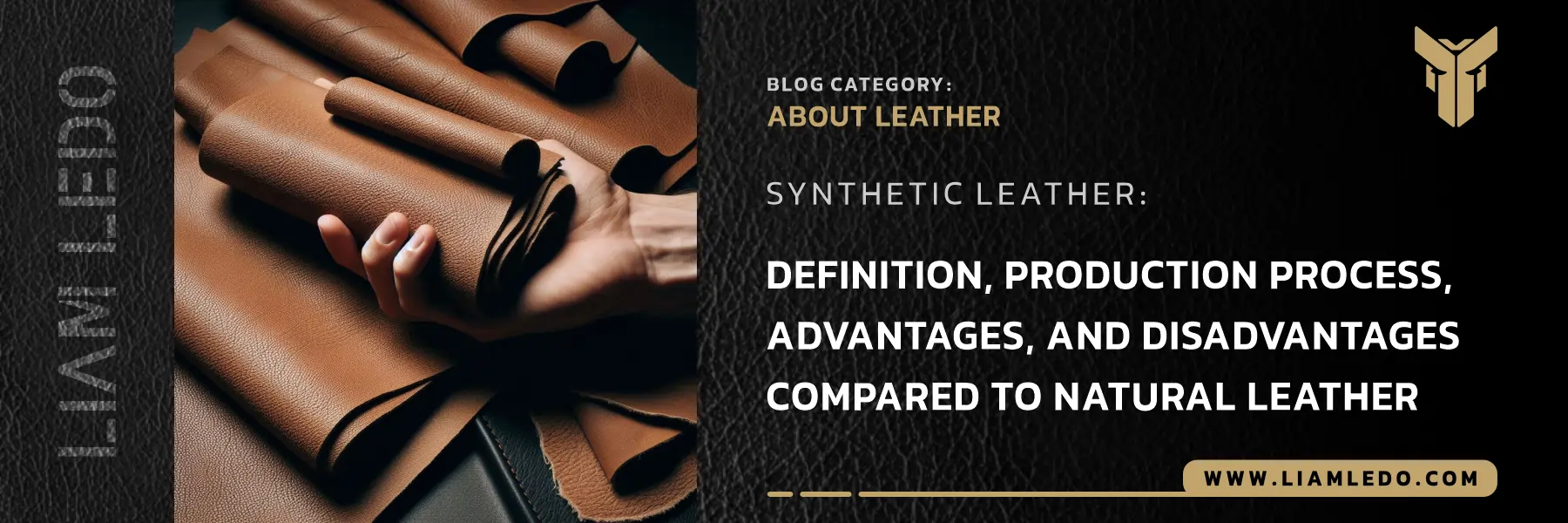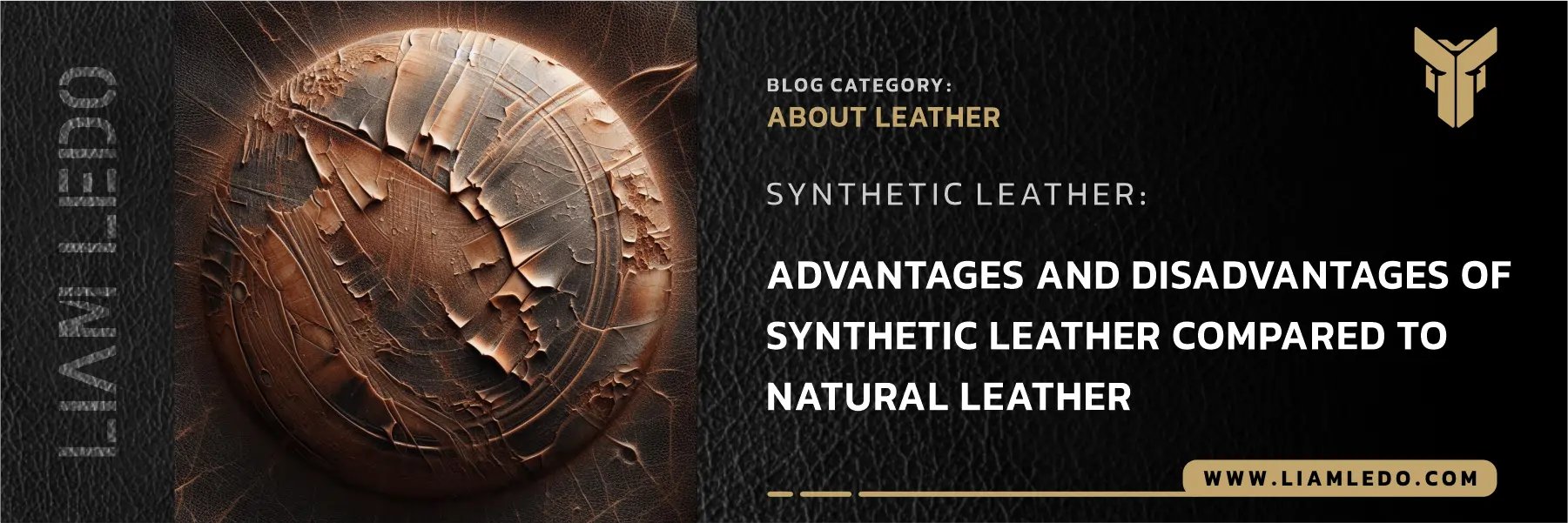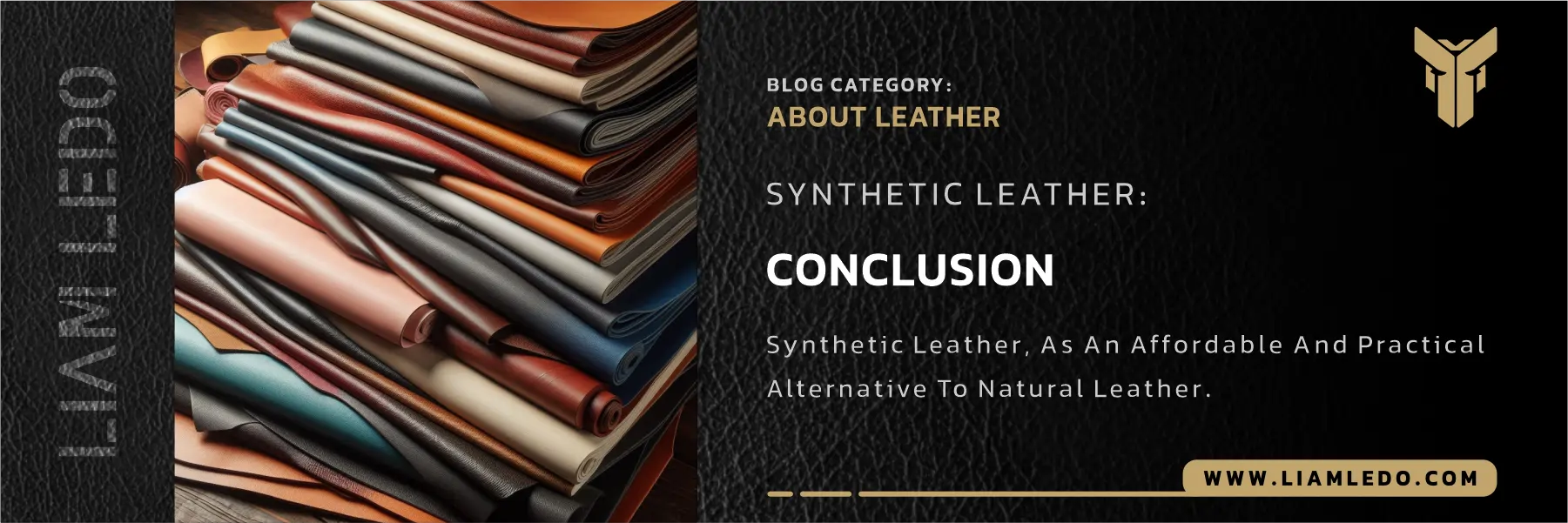
Definition, Production Process, Advantages, and Disadvantages Compared to Natural Leather
Synthetic leather is widely used in industries such as clothing, bags, shoes, and furniture as an alternative to natural leather. Due to its unique features, it has attracted the attention of many manufacturers and consumers. In this article, we will explore the definition of synthetic leather, its production process, and compare its advantages and disadvantages with natural leather.
Definition of Synthetic Leather:
Synthetic leather, also known by various names such as faux leather, industrial leather, or vinyl leather, is a material artificially produced to resemble natural leather. It is typically made from a combination of plastic and polymer materials and designed using advanced technologies to simulate the appearance and feel of natural leather.
Production Process of Synthetic Leather:

The production of synthetic leather involves several stages, each contributing to the unique characteristics of this material. The main steps in the production process include:
1. Selection of Raw Materials:
Two primary materials are used to produce synthetic leather: the base layer and the top layer. The base layer is typically made of polyurethane (PU) or polyvinyl chloride (PVC) foams. The top layer, which serves as the outer surface of the leather, is made of polymer materials like PU or PVC, applied to the base layer using various techniques.
2. Preparation of the Base Layer:
The base layer is generally made from polymer foams, which are processed into thin sheets. These foams provide the structure and initial shape of the synthetic leather. Depending on the type of synthetic leather, the base layers may be shaped and compressed using different techniques to achieve the desired thickness and form.
3. Production of the Top Layer:
The top layer is usually composed of plastic materials like PVC or PU, which are liquefied or turned into powder. This material is applied to the surface of the base layer using techniques such as spraying, printing, or coating. The top layer helps simulate the characteristics of natural leather and creates a similar appearance.
4. Drying and Stabilization:
After the top layer is applied, the product needs to be dried for a specified period to allow the polymer materials to fully adhere to the base layer and form the final shape. This stage may include thermal and chemical processes to stabilize and enhance the properties of synthetic leather.
5. Final Finishing:
In the final stage, synthetic leather may undergo additional processes such as surface finishing, pattern printing, and dyeing. These steps improve the appearance and create various textures on the surface of synthetic leather.

Advantages and Disadvantages of Synthetic Leather Compared to Natural Leather:
Advantages:
- Lower Price: One of the primary advantages of synthetic leather is its lower cost compared to natural leather. Due to the use of artificial materials and more cost-effective production processes, synthetic leather is generally less expensive. This makes it an economical option for producing clothing and accessories.
- Variety in Design and Coloring: Synthetic leather, due to the high flexibility of polymer materials, allows for the production of various textures and colors. This feature enables manufacturers to create products with diverse designs and colors, which may be more limited with natural leather.
- Water and Moisture Resistance: Because of its plastic nature, synthetic leather is naturally more resistant to water and moisture. This makes synthetic leather more suitable for use in humid and rainy environments, and it does not require the special care that natural leather does.
- Easy Maintenance: Synthetic leather is easy to clean due to its resistance to stains and dirt. Additionally, it does not require special care products and can be easily cleaned using common detergents.
- No Need for Animal Use: Synthetic leather is considered a more ethical and environmentally friendly option since it does not require the use of animal hides. This makes it appealing to those concerned with animal rights.
Disadvantages:
- Lower Breathability: Due to its plastic nature and lack of natural breathability, synthetic leather may be less breathable than natural leather. This can result in a warmer feel and increased sweating, especially during prolonged use.
- Unnatural Feel: Synthetic leather may not feel as soft or natural as genuine leather. Some people may find synthetic leather less comfortable and less similar to natural leather, which can be due to its lack of flexibility and different texture.
- Lower Durability: While synthetic leather is generally resistant, it may not be as durable as natural leather when it comes to long-term wear and tear. Natural leather, due to its fibrous structure, tends to last longer and conforms better to the shape and size of the user over time.
- Limited Repairability: If synthetic leather becomes damaged, repairing it can be challenging, and in many cases, the product may need to be entirely replaced. This can lead to additional costs, unlike natural leather, which can often be repaired using specific techniques. Synthetic leather has limited repair options.
- Chemical Odor: Synthetic leather may have a distinct chemical odor due to the materials used in its production, which may be unpleasant for some people. While this odor may fade over time, it can be bothersome initially for some users.

Conclusion:
Synthetic leather, as an affordable and practical alternative to natural leather, has gained attention due to its unique features such as lower cost, design variety, and water resistance. However, it also comes with specific drawbacks, including lower breathability, a less natural feel, and limited durability compared to natural leather.
When choosing between synthetic and natural leather, individual needs, budget, and personal preferences can help in making a better decision. Synthetic leather can be a suitable option for those seeking more economical and versatile products, while natural leather remains a popular choice for those who value quality and longevity.






